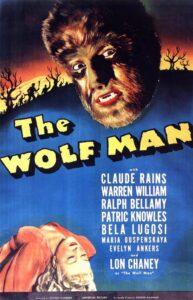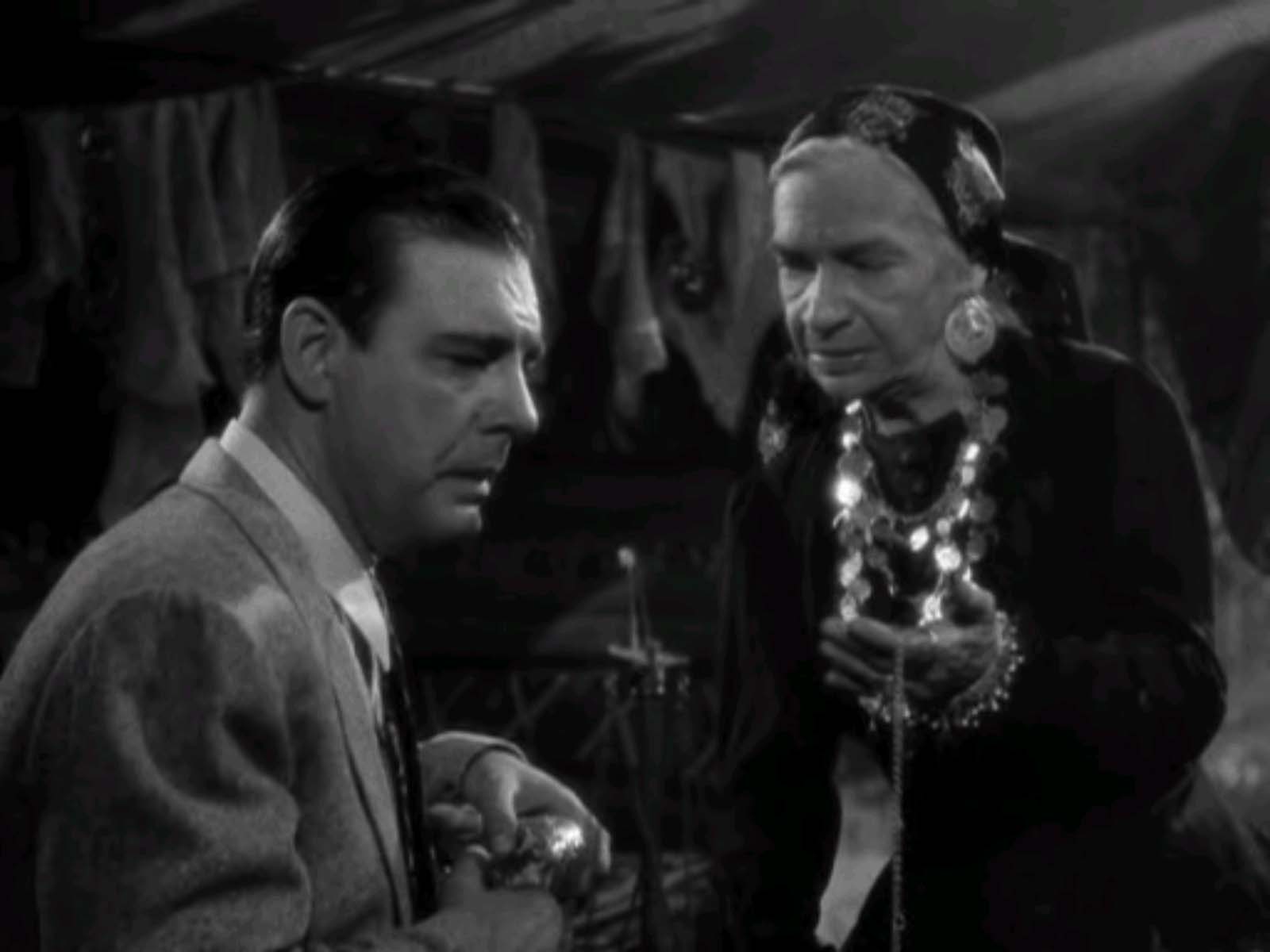|

Synopsis:
Upon returning to his ancestral home in Wales, the estranged son (Lon Chaney, Jr.) of a local nobleman (Claude Rains) visits a gypsy camp with a beautiful young woman (Evelyn Ankers) and her friend Jenny (Fay Helm). When Jenny is attacked by a wolf, Chaney comes to her rescue and is bitten; soon he starts to suspect that he may have been bitten by a werewolf, and fears that he will begin harming others.
|
|
Genres, Themes, Actors, and Directors:
- Bela Lugosi Films
- Claude Rains Films
- Horror
- Lon Chaney, Jr. Films
- Ralph Bellamy Films
- Warren William Films
- Werewolves
Response to Peary’s Review:
Peary heaps enormous praise upon this beloved Universal horror flick, referring to it as both “intelligent” and “literate”, and noting that it provides an effective variation on not only the “within-every-man-there-is-a-beast” theme, but also that of the “familiar forties doomed hero — an innocent man who suddenly finds himself trapped and tortured by Fate.” Indeed, while Chaney is no great actor, he’s perfectly cast here as a prodigal son misfit who stands out — both literally and figuratively — as different and strange in his own hometown: hulking Chaney and diminutive Rains make for an extremely unlikely father/son pairing, and Chaney’s broad American accent is in stark contrast to that of the townsfolk. It’s no wonder he quickly finds himself subsumed into the tragic fate of traveling gypsies (also “strangers” in the town).
Although Peary finds Jack Pierce’s makeup “convincing” and the transformation scenes “effective”, most today would disagree; particularly egregious (and puzzling even to Peary) is why Chaney “retains his human form and walks on two furry feet, while [Bela] Lugosi” (the original werewolf; his role is miniscule) “was a full-fledged wolf.” With that said, The Wolf Man relies on atmospheric sets and internal tension rather than make-up and fancy special effects to provide its chills — and in this sense, it succeeds. Of special note is Maria Ouspenskaya in perhaps her most iconic role, as the gypsy woman who informs Chaney what has happened to him; her gentle, maternal chants (“The way you walked was thorny, through no fault of your own”) elevate the film to a higher level altogether.
Redeeming Qualities and Moments:
- Effectively atmospheric, fog-drenched sets

- Maria Ouspenskaya as a wise gypsy woman who takes Chaney under her wing

Must See?
Yes, for its importance in horror film history.
Categories
(Listed in 1001 Movies You Must See Before You Die)
Links:
|



One thought on “Wolf Man, The (1941)”
A must – for “its importance in horror film history”, and as one of the best in the Universal classic horror series.
This remains one of my faves in the horror history canon. Perhaps because there’s something distant and removed about vampires, ghouls, etc. But, as stated in the assessment, man does have the beast within – and it can easily come out, whether we’re bitten or not. That brings the film closer to home.
This film actually covers film noir territory as well, since Chaney, Jr. meets his fate as the result of coming to someone’s aid. (That first wolf attack probably is the film’s most harrowing moment.)
Director George Waggner may not have a name all that familiar to ffs (he eventually thrived in television), but here he fashioned up one for the ages. ‘The Wolf Man’ is particularly elevated by Curt Siodmak’s rather intelligent script, and remarkable production design, lighting and cinematography. The film looks great. And it has one of the more A-list casts for this kind of film (including Warren William, Ralph Bellamy and Patric Knowles) – everybody is in top form, making ‘TWM’ that much more memorable.
This one really does stand out – it was a gripping treat for me on this revisit.